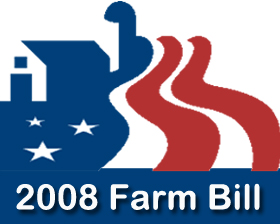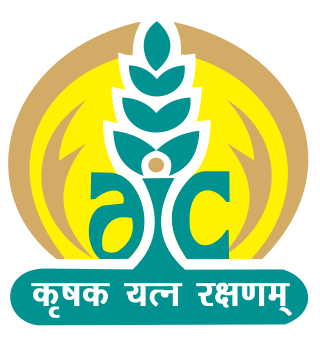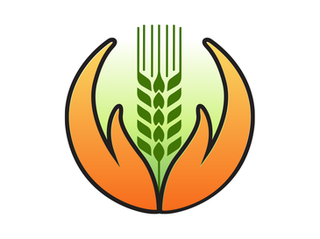Related Research Articles

Insurance is a means of protection from financial loss in which, in exchange for a fee, a party agrees to compensate another party in the event of a certain loss, damage, or injury. It is a form of risk management, primarily used to protect against the risk of a contingent or uncertain loss.

Life insurance is a contract between an insurance policy holder and an insurer or assurer, where the insurer promises to pay a designated beneficiary a sum of money upon the death of an insured person. Depending on the contract, other events such as terminal illness or critical illness can also trigger payment. The policyholder typically pays a premium, either regularly or as one lump sum. The benefits may include other expenses, such as funeral expenses.
Health insurance or medical insurance is a type of insurance that covers the whole or a part of the risk of a person incurring medical expenses. As with other types of insurance, risk is shared among many individuals. By estimating the overall risk of health risk and health system expenses over the risk pool, an insurer can develop a routine finance structure, such as a monthly premium or payroll tax, to provide the money to pay for the health care benefits specified in the insurance agreement. The benefit is administered by a central organization, such as a government agency, private business, or not-for-profit entity.
Crop insurance is insurance purchased by agricultural producers and subsidized by a country's government to protect against either the loss of their crops due to natural disasters, such as hail, drought, and floods ("crop-yield insurance", or the loss of revenue due to declines in the prices of agricultural commodities.
Universal life insurance is a type of cash value life insurance, sold primarily in the United States. Under the terms of the policy, the excess of premium payments above the current cost of insurance is credited to the cash value of the policy, which is credited each month with interest. The policy is debited each month by a cost of insurance (COI) charge as well as any other policy charges and fees drawn from the cash value, even if no premium payment is made that month. Interest credited to the account is determined by the insurer but has a contractual minimum rate. When an earnings rate is pegged to a financial index such as a stock, bond or other interest rate index, the policy is an "Indexed universal life" contract. Such policies offer the advantage of guaranteed level premiums throughout the insured's lifetime at a substantially lower premium cost than an equivalent whole life policy at first. The cost of insurance always increases, as is found on the cost index table. That not only allows for easy comparison of costs between carriers but also works well in irrevocable life insurance trusts (ILITs) since cash is of no consequence.
Whole life insurance, or whole of life assurance, sometimes called "straight life" or "ordinary life", is a life insurance policy which is guaranteed to remain in force for the insured's entire lifetime, provided required premiums are paid, or to the maturity date. As a life insurance policy it represents a contract between the insured and insurer that as long as the contract terms are met, the insurer will pay the death benefit of the policy to the policy's beneficiaries when the insured dies. Because whole life policies are guaranteed to remain in force as long as the required premiums are paid, the premiums are typically much higher than those of term life insurance where the premium is fixed only for a limited term. Whole life premiums are fixed, based on the age of issue, and usually do not increase with age. The insured party normally pays premiums until death, except for limited pay policies which may be paid up in 10 years, 20 years, or at age 65. Whole life insurance belongs to the cash value category of life insurance, which also includes universal life, variable life, and endowment policies.

In the United States, the farm bill is comprehensive omnibus bill that is the primary agricultural and food policy instrument of the federal government. Congress typically passes a new farm bill every five to six years.
The agricultural policy of the United States is composed primarily of the periodically renewed federal U.S. farm bills. The Farm Bills have a rich history which initially sought to provide income and price support to US farmers and prevent them from adverse global as well as local supply and demand shocks. This implied an elaborate subsidy program which supports domestic production by either direct payments or through price support measures. The former incentivizes farmers to grow certain crops which are eligible for such payments through environmentally conscientious practices of farming. The latter protects farmers from vagaries of price fluctuations by ensuring a minimum price and fulfilling their shortfalls in revenue upon a fall in price. Lately, there are other measures through which the government encourages crop insurance and pays part of the premium for such insurance against various unanticipated outcomes in agriculture.

Agriculture Insurance Company of India Limited (AIC) is an Indian public sector undertaking headquartered in New Delhi. It is a government-owned agricultural insurer under ownership of the Ministry of Finance, Government of India. The company offers yield-based and weather-based crop insurance programs in almost 500 districts of India, and covers almost 20 million farmers, making it the biggest crop insurer in the world by number of farmers served.

The Federal Crop Insurance Corporation (FCIC) is a wholly owned government corporation managed by the Risk Management Agency of the United States Department of Agriculture. FCIC manages the federal crop insurance program, which provides U.S. farmers and agricultural entities with crop insurance protection.

The Agriculture Risk Protection Act of 2000 made major revisions to the United States' federal crop insurance program and provided emergency agricultural assistance. The crop insurance provisions significantly increased the program's government subsidy; improved coverage for farmers affected by multiple years of natural disasters; and authorized pilot insurance programs for livestock farmers and growers of other farm commodities that were not served by crop insurance, among many other provisions. The emergency provisions made available a total of $7.14 billion in emergency farm assistance, mostly in direct payments to growers of various commodities to compensate for low farm commodity prices.
Catastrophic crop insurance (CAT) is a component of the U.S. federal crop insurance program, originally authorized by the Federal Crop Insurance Reform Act of 1994. CAT coverage compensates farmers for crop yield losses exceeding 50% of their average historical yield at a payment rate of 55% of the projected season average market price. CAT coverage requires that a farmer realize a yield loss of more than 50% and only makes payments on losses exceeding the 50% threshold. Producers pay no premium for CAT coverage, but except for cases of financial hardship, must pay an administrative fee of $300 per crop. A producer has the ability to purchase additional insurance coverage beyond CAT coverage, but must pay a premium, partially subsidized by the government.

The Federal Crop Insurance Reform and Department of Agriculture Reorganization Act of 1994, Pub. L.Tooltip Public Law 103–354, 108 Stat. 3178, was introduced on April 14, 1994 by Kika de la Garza (D-TX) and was signed into law on October 13, 1994 by President Bill Clinton. It consisted of two titles:
In Canadian agricultural policy, a Gross Revenue Insurance Plan (GRIP) is a form of direct payment combining a crop insurance component and a revenue protection component. Farmers finance one-third of the premiums paid out under the revenue protection component. The GRIP makes payments when market revenue falls short of a producer’s target revenue. Target revenue per acre for an individual crop is based on historical yields, a multi-year moving average of price, and a level of insurance coverage chosen by the producer.
Farm programs can be part of a concentrated effort to boost a country’s agricultural productivity in general or in specific sectors where they may have a comparative advantage. There are many different types of farm programs, with a variety of objectives and created with different economic mechanisms in mind. Some are meant to benefit farmers directly, while others seek to benefit consumers. They target food prices and quantity of food available on the market, as well as production and consumption of certain goods. Some are meant to benefit farmers directly, while others seek to benefit consumers. They target food prices and quantity of food available on the market, as well as production and consumption of certain goods.

Agriculture in India is highly susceptible to risks like droughts and floods. It is necessary to protect the farmers from natural calamities and ensure their credit eligibility for the next season. For this purpose, the Government of India introduced many agricultural social insurances throughout the country, the most important one of them being Pradhan Mantri Fasal Bima Yojana.

The Climate Corporation is a digital agriculture company that examines weather, soil and field data to help farmers determine potential yield-limiting factors in their fields.
Multiple-peril insurance coverage is a kind of insurance that bundles together multiple coverages that typically would be needed with each other. Typically the package may include coverage for business crime, business automobile, boiler and machinery, marine, or farm. The benefits to purchasing multiple-peril insurance coverage include lower overall premium costs for the insured because of the benefits that the insured receives on the basis of an all-in-one type package, as well as broader coverage for losses that typically occur together, like flood damage to an insured's basement and wind damage to an insured's roof.

The Pradhan Mantri fasal bima yojana (PMFBY) launched on 18 February 2016 by Prime Minister Narendra Modi is an insurance service for farmers for their yields. It was formulated in line with One Nation–One Scheme theme by replacing earlier two schemes Agricultural insurance in India#National Agriculture Insurance Scheme and Modified National Agricultural Insurance Scheme by incorporating their best features and removing their inherent drawbacks (shortcomings). It aims to reduce the premium burden on farmers and ensure early settlement of crop assurance claim for the full insured sum.
Index-based insurance, also known as index-linked insurance, weather-index insurance or, simply, index insurance, is primarily used in agriculture. Because of the high cost of assessing losses, traditional insurance based on paying indemnities for actual losses incurred is usually not viable, particularly for smallholders in developing countries. With index-based insurance, payouts are related to an “index” that is closely correlated to agricultural production losses, such as one based on rainfall, yield or vegetation levels. Payouts are made when the index exceeds a certain threshold, often referred to as a “trigger”. By making payouts according to an index instead of individual claims, providers can circumvent the transaction costs associated with claims assessments. Index-based insurance is therefore not designed to protect farmers against every peril, but only where there is a widespread risk that significantly influences a farmer’s livelihood. Many such indices now make use of satellite imagery.
References
- ↑ "Deadline nearing to enroll for NAP specialty crop insurance". Purdue University. January 8, 2015. Retrieved April 2, 2015.
 This article incorporates public domain material from Jasper Womach. Report for Congress: Agriculture: A Glossary of Terms, Programs, and Laws, 2005 Edition (PDF). Congressional Research Service.
This article incorporates public domain material from Jasper Womach. Report for Congress: Agriculture: A Glossary of Terms, Programs, and Laws, 2005 Edition (PDF). Congressional Research Service.